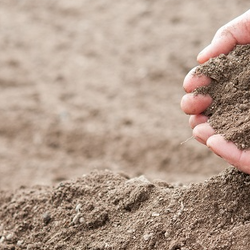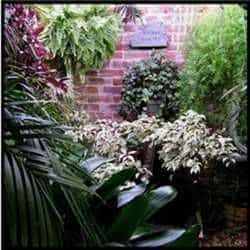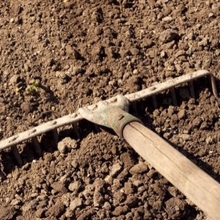(Editor's Note: This article was originally published on March 7, 2007. Your comments are welcome, but please be aware that authors of previously published articles may not be able to respond to your questions.)
Here’s a sad little tale I hear about once a week from someone visiting our nursery. “Boo-hoo-hoo. I’ve spent sooo much money on new plants and they look terrible – half of them are dead! I want my garden to look just like yours!”
I’m a nice person, so I always wrap my arm around their shoulder and feel their pain with them. “Yes, yes, it is so disappointing, isn’t it?” And then in my softest, kindest granny voice I ask, “Can you tell me what kind of soil you have, dear?” And suddenly, the mood shifts. Tension is in the air as their eyes dart furtively back and forth and side to side. “Um … er … well ...”
“Is your soil mostly clay?” I query ever so kindly. “Yeeeesssss!” she’ll blurt out, embarrassed. When I tell her she’s going to have to amend her soil if she wants happy plants and a pretty garden, she’ll back away from me. “Do I haaaave to?”
“Yes, Virginia, you have to.”
 |
| Vertical spikeage with Lupinus species Australia and Linaria triornithophora Three Birds Flying. |
I adore cottage gardens because they’re so freeing in terms of design. You can change them around every year or every season if you want to. You can let them get overgrown and it adds to their charm. You can cram loads of your favorite plants in willy-nilly and let them fight it out. You can even let the weeds run amuck a bit. BUT if you want a luxurious showy cottage garden, you shall not ignore the soil. Soil is numero uno. It is the garden god. Soil is everything (of course light is also muy importante, but most folks won’t try to ignore a lack of light).
The plants you want to grow in your cottage garden will have roots. Big happy roots = big happy healthy plants with lots of flowers and far fewer pests. Roots like oxygen and a loose medium to push out into. Clay soil does not let them do this. Think of clay as squeezing the roots and choking them for air. And clay does not drain. That is bad.
The most excellent news is that clay soil is EASY to FIX. The answer is always compost and lots of it (some folks think the answer to clay is sand, as in sand = drainage. Just remember sand + clay = cement!). If you’re buying compost, buy the best you can. Avoid cheap “box store” compost. It is often made mostly of wood product and sand and is not very nutritious (and then you think it’s your fault your garden is not growing). Generally, look for compost with some manure in it. Good compost provides lots of nitrogen, nutrients and texture to your clay.
If you’re starting out with pure clay soil, add enough compost so your soil is at least half compost and half clay. Dig it in to at least 1.5’ deep – the deeper the better. Break up the clods as best you can – basically you want soil that is easy to slide a shovel into. Ta – da! You’re done for the moment. You can begin to plant your new area. After this, the big idea is to continually improve your soil and it’s REALLY EASY TO DO. If you live in an area with a long gardening season like me, add a 1” layer of compost to the top of your soil at least twice and even better, three times a year (Spring, Summer and Fall). Just toss it on with a shovel and smush it around. No need to dig it in. The nutrients will leach down toward the roots and our friends the earthworms will come up to the surface to munch on it, further aerating and fertilizing your soil. Isn’t that nice?
 |
| Vertical spikeage with Lupinus species Australia and Linaria triornithophora Three Birds Flying. |
So let’s say it together: “Soil is EVERYTHING!”
In the next part of this catalog, you’ll find lots of great cottage garden plants to try. Remember, they’re classics for a reason. They’re easy, charming, they make nice cut flowers and usually self-sow, providing free plants and surprising unplanned combinations each year. Many are deliciously fragrant and attract plenty of pollinators to the garden. As scientists are now raising the alarm over the greatly reduced numbers of pollinators, planting bee, bird and butterfly friendly gardens becomes even more important.
Planting in odd-numbered groups of 3, 5 or more really does look better and more natural, just like the garden magazines say. Repeating plants here and there, even if it’s just a single plant, looks cool and brings it all together for the eye. Along with Roses, vertical accents are a must in the cottage garden, so plant upright spikers like Verbascums, Hollyhocks and Lupines. And don’t forget the vines! They’re so useful and so essential for creating cottage garden magic!
Happy Gardening!
Annie

















